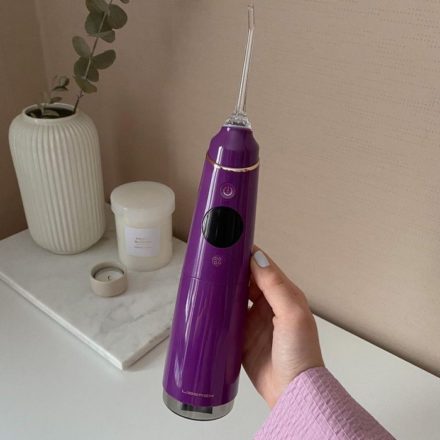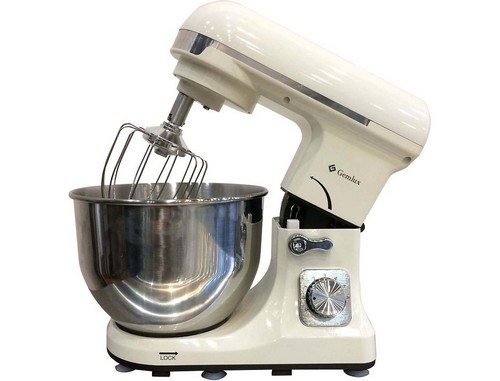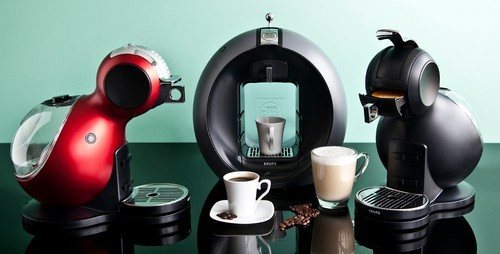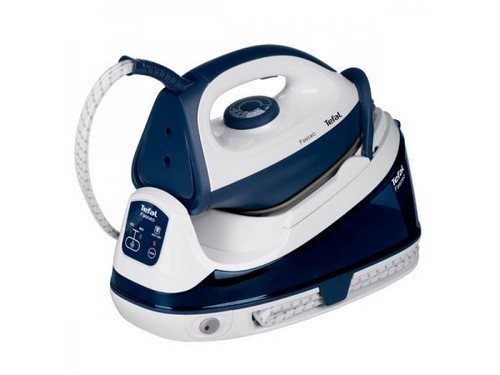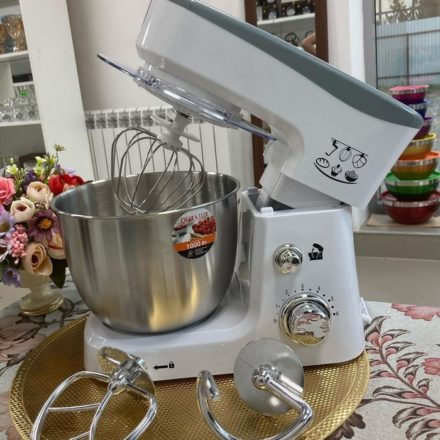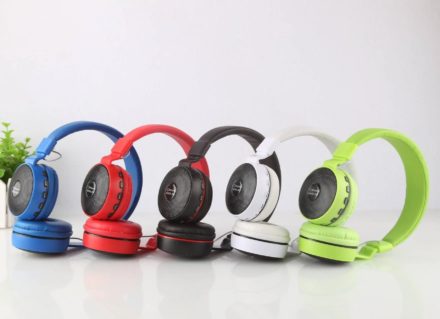The choice of a suitable model is made depending on the tasks assigned to the irrigator. For example, some devices are designed for delicate sanitation of the oral cavity and irrigation of the nasal mucosa. Other irrigators are designed for the care of orthodontic structures.
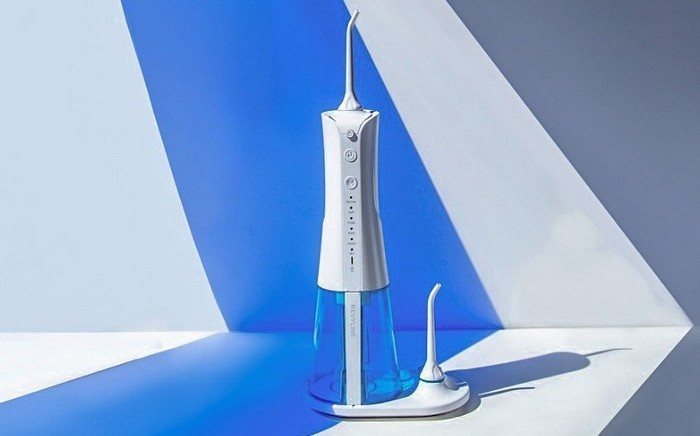
- Purpose of an oral irrigator
- Indications for use
- Contraindications for use
- Device type
- Stationary
- Portable
- Power type
- Net
- Battery
- Not required
- Principle of operation
- Manual
- Monojet
- Pulse
- Ultrasonic
- Microbubble technology
- Continuous operation time
- Operating modes
- Jet
- Standard
- Soft
- Specifications
- Maximum fluid pressure level
- Minimum pressure level
- Number of modes
- Tank volume
- Ripple
- Nozzles
- Brush attachment
- For blast cleaning
- To clean your tongue
- Periodontal
- Orthodontic
- Nasal
- For implants and crowns
- Lifetime
- Additional functions
- Pressure adjustment
- Use of antibacterial and anti-inflammatory supplements
- Container for attachments
- UV lamp in the attachment container
- Contactless induction charger
Purpose of an oral irrigator
You can prevent the occurrence of oral diseases with the help of irrigators. These hygienic devices generate a thin stream of water, which, under a certain pressure, rinses the space between the teeth. Thus, the mouth is cleansed of food debris and plaque.
Irrigators can be mechanical, portable or stationary. When choosing a suitable device, you need to pay attention to its technical characteristics, advantages and disadvantages, compare prices for various models and read customer reviews.
Most irrigators are multifunctional dental devices that are used to sanitize the oral cavity. They are equipped with several standard attachments, allowing the device to be used by the whole family. Most models have a delicate operating mode that is suitable for children.
Before buying the model you like, you should consult your dentist, as the irrigator has contraindications for use.
Indications for use
Irrigators are indispensable for people who wear braces, have bridges, crowns, veneers and implants. They thoroughly clean plaque from orthodontic structures, eliminate bad breath and help get rid of bleeding gums.
Regular use of a hygienic device is indicated for:
- periodontal disease;
- periodontitis;
- gingivitis;
- diabetes mellitus
They are also recommended:
- people with reduced immunity;
- smokers;
- women during pregnancy and lactation.
If your teeth are healthy, you should use an irrigator no more than 3 times a week. Frequent use of a hygiene device can lead to thinning of the enamel and increased sensitivity of the gums. Your dentist will help you select the correct water jet pressure, frequency of use of the device, and type of cleaning solution.
Contraindications for use
The use of irrigators is contraindicated when:
- acute gum infection;
- heart attack;
- stroke;
- injuries and neoplasms in the oral cavity;
- heart disease;
- presence of a pacemaker;
- rosacea.
Device type
By their design, irrigators are stationary and portable. Each type of device has certain advantages and disadvantages.
Stationary
Stationary irrigators are hygienic devices that operate from a household electrical network. They have a large container for water and a rich set of attachments. For good stability on a wet surface, they are equipped with suction cups or wall mounts. Such models are suitable for home use by the whole family. They are often chosen by people for whom high jet power is important.
Among the models of stationary devices, there are dental centers designed for complete oral care. They perform the functions of an irrigator and a toothbrush.
The main advantages of stationary devices are their high power, a large number of functions and excellent equipment. However, they need to be provided with a separate place in the bathroom, which is not always possible. In addition, they create strong vibration during operation and are large in size.
Portable
Such devices have a compact size and a small volume of the liquid reservoir. They can be mechanical or battery-powered. Portable irrigators are convenient to take with you on a trip, as they take up little space.
Such devices are characterized by autonomy, light weight and ease of use. Among their disadvantages, it is worth noting a small water container, low wear resistance of parts and low power compared to stationary models.
Power typeDevice type
By design, irrigators are either stationary or portable. Each type of device has certain advantages and disadvantages.
The best irrigator for the oral cavity - TOP-40 rating
Stationary
Stationary irrigators are hygienic devices powered by household electricity. They have a large water container and a rich set of attachments. For good stability on wet surfaces, they are equipped with suction cups or wall mounting. Such models are suitable for home use by the whole family. They are often chosen by people for whom high jet power is important.
Among the models of stationary devices there are dental centers designed for complete oral care. They perform the functions of an irrigator and a toothbrush.
The main advantages of stationary devices are their high power, a large number of functions and excellent equipment. However, they must be provided with a separate place in the bathroom, which is not always possible. In addition, they create strong vibration during operation and are large in size.
Portable
Such devices have a compact size and a small volume of liquid reservoir. They can be mechanical or battery operated. Portable irrigators are convenient to take with you on a trip, as they take up little space.
Power type
When choosing an irrigator, you should pay attention to the type of power supply.Hygiene devices can be battery-powered, mains-powered or battery-powered. Mechanical models do not require connection to a power source.
Net
Stationary irrigators operate from the household network. When choosing a suitable model, you should pay attention to the cable length. It should be enough to connect the device to the outlet.
The main advantages of wired devices are their high power and low energy consumption during operation. The downside is the dependence on electricity and the presence of sockets in the bathroom.
Battery
Most models of portable irrigators are equipped with a battery. When choosing, you should pay attention to the battery capacity, since the charging time will depend on it. The optimal figure is 1500-2000 mAh.
Rechargeable devices are compact in size and independent from the mains, which allows you to take them with you to work or on a trip. However, using a battery limits the power of the device. Another disadvantage is the need to frequently charge the battery during regular use of the device.
Not required
Mechanical irrigators do not require connection to any source of electricity. They are a plastic flask with a tube through which water is supplied by pressing a button. They are ideal for rinsing and moisturizing the nose. Also, such devices are recommended for introducing children to oral hygiene.
12 Best Oral Irrigator Manufacturers
The main advantage of mechanical devices is their complete autonomy from any energy sources. They are inexpensive and easy to use. However, this technique does not differ in power and functionality.
Principle of operation
During operation, the irrigator creates a thin stream of water that cleanses the oral cavity and massages the gums. Based on the principle and characteristics of liquid supply, there are models with manual, mono-jet, pulse, ultrasonic and microbubble technology.
Manual
Such models are a plastic case with a built-in container for liquid and a mount for an extended nozzle. The operating principle of a manual irrigator is quite simple. Liquid is poured into the reservoir, which is supplied through the nozzle by pressing the button located on the body.
The main advantages of manual equipment for oral hygiene are its independence from the power source and low cost. The disadvantages include low jet pressure and limited functionality.
Monojet
Monojet technology is one of the simplest. Its operating principle is a continuous flow of jet, which comes directly from the water supply. Such irrigators are designed to gently remove food particles and prevent caries. They are recommended for people who frequently brush their teeth after eating.
The advantages of such equipment are its independence from electricity, ease of operation, compactness and low cost. It also has several disadvantages: low power, the need to install a conductor on a water tap and the inability to use dental fluid.
Pulse
Models with pulse technology create jets that are delivered in short pulses.This is similar to small blows of water, the force of which pushes out leftover food and massages the gums.
Among the advantages of pulse irrigators, one should note their effectiveness in the fight against caries, bleeding and inflammation of the gums. They are recommended for people with artificial dentures in the mouth and braces. Such devices are the prevention of periodontitis and gingivitis. Their only disadvantage is their fairly high cost.
Ultrasonic
With ultrasonic technology, a shock wave is formed, which, without changing pressure, effectively washes away food debris from the interdental space and intergingival pockets. As the water flow accelerates, microscopic bubbles form and literally bombard the plaque.
Such irrigators are recommended for people with bridges, veneers and crowns. They provide good sanitation of the oral cavity and massage the gums, improving their blood circulation. Apart from high cost, they have no disadvantages
6 best semi-professional chainsaws - rating
Microbubble technology
This technology is the most effective and advanced. Under pressure, a huge number of microscopic bubbles appear in the water flow, which wash away plaque. In this case, the liquid is saturated with oxygen, which has an antibacterial effect.
Irrigators with microbubble technology can destroy pathogenic microflora and prevent the occurrence of many oral diseases. Their main and only drawback is their high cost.
Continuous operation time
The duration of continuous operation of the irrigator depends on the type of its device. For portable models it is 1-5 minutes.For stationary devices this figure ranges from 30-60 minutes. The duration of continuous operation of the device is important for people who regularly undergo professional sanitation of the oral cavity.
Operating modes
The choice of the appropriate mode depends on the tasks assigned to the irrigator. This could be cleaning orthodontic structures, caring for artificial dentures, or preventing oral diseases.
This mode is used to thoroughly clean the interdental space and hard-to-reach areas of the oral cavity. The jet may be pulsating. It is applied with strong pressure from the nozzle in short pulses, pushing out leftover food.
Some irrigator nozzles are equipped with a 360° rotating head that creates a rotating jet. It provides deep cleansing, prevents cavities, whitens, polishes enamel and cares for gums, reducing their sensitivity.
Standard
A regimen for daily oral care. It allows you to thoroughly clean teeth, crowns, braces and bridges from bacterial plaque. In addition, it prevents the formation of tartar and massages the gums, stimulating their blood flow.
Soft
This mode is intended for children, as well as people with sensitive teeth and oral diseases. It forms a thin stream of water with the minimum possible pressure of 200-300 kPa. This flow power cleans the interdental space well without damaging the gums.
Specifications
When choosing an irrigator, first of all you should pay attention to its technical characteristics.The quality of oral cavity sanitation and the solution of certain tasks assigned to the irrigator depend on them.
Maximum fluid pressure level
This is the most important characteristic, as it indicates the power of the irrigator and the quality of sanitation of the oral cavity. The pressure of the jet, which is supplied to the oral cavity through the nozzle, is measured in kilopascals. Its maximum level shows the ability of the liquid flow to thoroughly wash the oral cavity from food debris and plaque.
8 best chainsaws for home in terms of price and quality - rating
In portable models this figure can reach 760 kPa, and in standard models it can reach up to 990 kPa. It is worth noting that people with sensitive teeth are not recommended to use the device at maximum pressure, as this will lead to injury to the gums.
Minimum pressure level
This is the lowest level of liquid jet pressure that the device produces during operation. This indicator is important for people with sensitive teeth and easily injured gums. It can vary between 80-200 kPa.
Number of modes
Stationary irrigators with high water jet pressure can have up to 10 speeds with smooth switching. The larger the number, the more intense the impact of the jet on the treated area. For ordinary portable models, the number of modes ranges from 2 to 5.
Tank volume
Large containers are less likely to need to be refilled with water and interrupt the sanitation of the oral cavity. The largest tanks have stationary irrigators. They can hold from 300 to 1000 ml of liquid. Portable devices are equipped with small containers with a volume of 15 to 200 ml.
Ripple
Modern irrigators form a pulsating jet, the frequency of which ranges from 1200-1850 pulses per minute. The higher this indicator, the more intense the effect on the treated area of the user’s oral cavity.
Nozzles
Brush attachment
This is a hybrid accessory that is often used with antibacterial paste. It performs the function of a toothbrush, increasing the effectiveness of the hygiene procedure.
For blast cleaning
These are nozzles designed to deliver a directed stream of water into the oral cavity. Most often they are single-jet, forming a thin stream of liquid. There are also multi-jet accessories with constant pressure.
To clean your tongue
Special accessories in the form of a round spoon help effectively remove plaque from the tongue and the inner surface of the cheeks. It provides gentle cleansing of the surface being treated, accompanied by a directed flow of water.
Periodontal
This device is designed to care for areas located under bridge structures and prostheses. It has a soft tip made of silicone or plastic rubber. Its tapered shape directs the water stream to the gum margin and into the gum pocket
Orthodontic
This attachment combines the functions of a toothbrush and an irrigator. It has soft bristles that provide hygienic care for braces. With this accessory you can penetrate into the space between tightly spaced teeth and clean them of plaque and food debris.
6 best powerful chainsaws - rating
Nasal
This attachment is used to prevent and treat colds and allergies. It consists of 2 tips through which a saline solution or medicine is sprayed. The device irrigates the nasal sinuses well and eliminates congestion.
For implants and crowns
The attachment has a curved tip with tufts of bristles that effectively remove plaque from dentures and other artificial structures. With the help of a pulsating jet, the accessory washes away food particles and prevents the growth of bacteria.
Service life
The duration of the irrigator's operation depends on compliance with the operating requirements. When using only clean water, a stationary device will last from 3 to 7 years, and a portable one - from 2 to 3. The use of various solutions and extracts significantly reduces the service life of the device.
Additional functions
Most irrigators are equipped with additional functions that make the process of oral sanitation more comfortable. Pressure control
This function helps to adjust the pressure of the jet. With its help, you can choose the optimal pressure for yourself, which will clean the interdental space well and not injure the gums.



